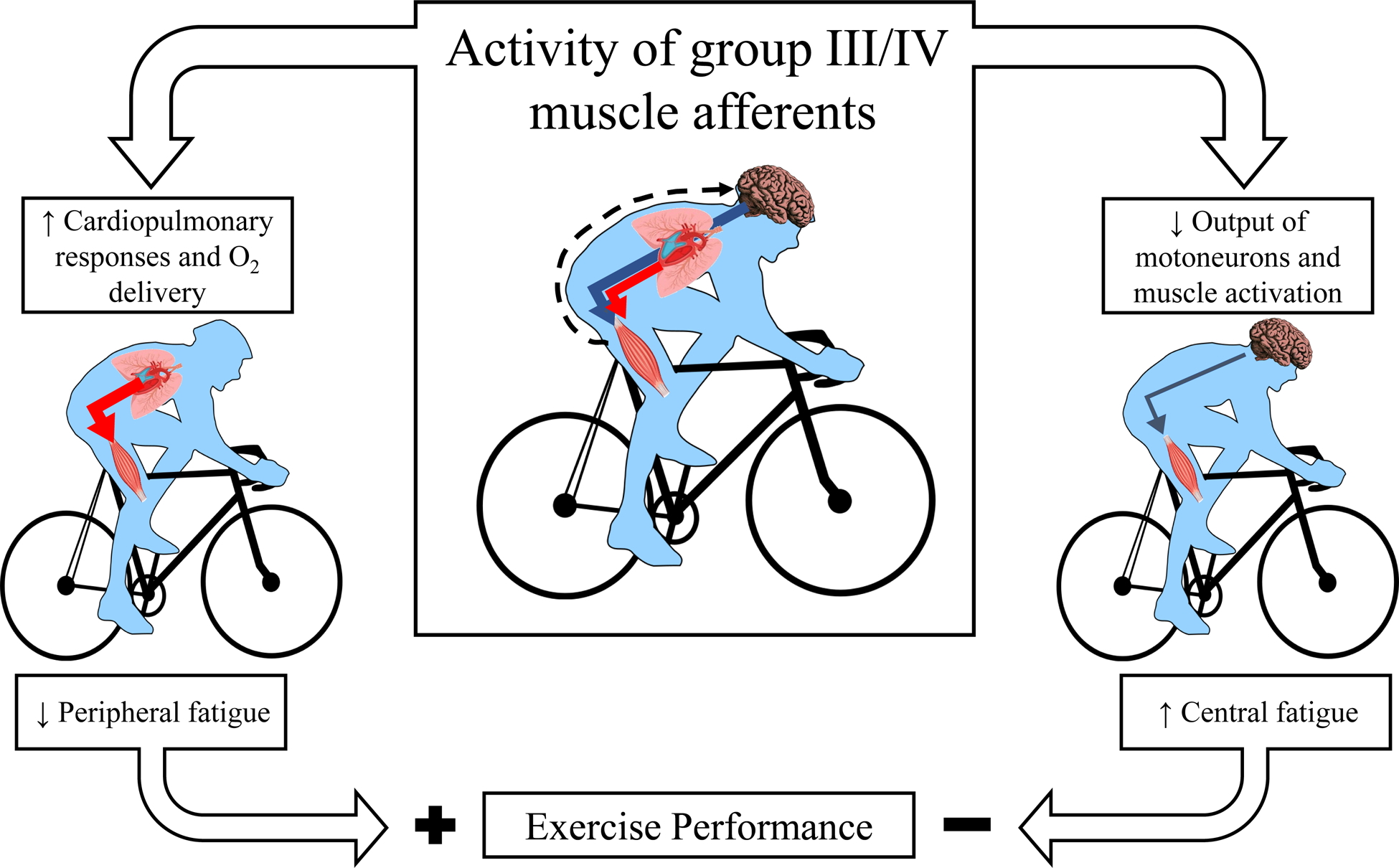Figure 1:

Consequences of group III/IV muscle afferent feedback for the development of neuromuscular fatigue and whole body exercise performance. Muscle contraction-induced increases in group III/IV afferent feedback raise circulation and pulmonary ventilation during exercise and thereby assure adequate oxygen delivery to the working locomotor muscle. This attenuates the development of peripheral fatigue and facilitates exercise performance (left side). On the other side (right side), group III/IV muscle afferent feedback restricts spinal motoneuron output and voluntary muscle activation, i.e. promotes central fatigue and impairs exercise performance. Black dashed arrow represents the central projection of group III/IV muscle afferents during exercise. The red and blue arrows represent locomotor muscle oxygen delivery and descending neural input to the locomotor muscle, respectively.
